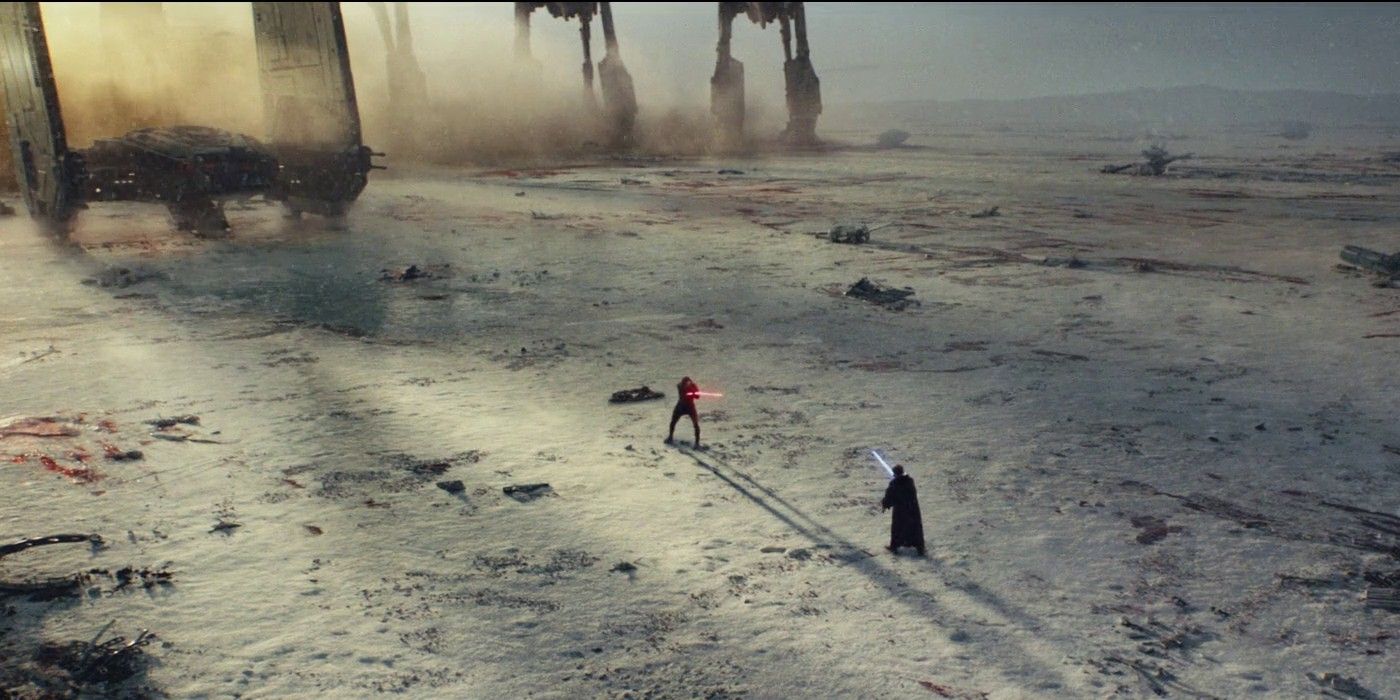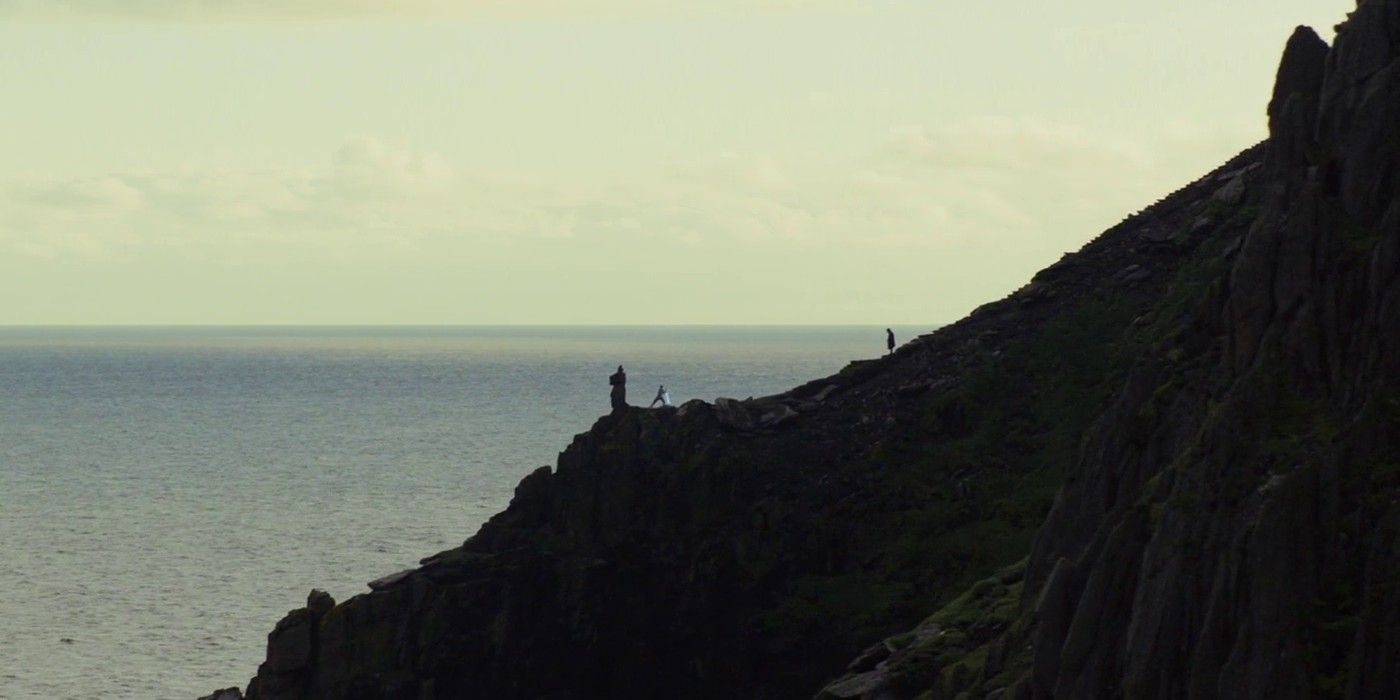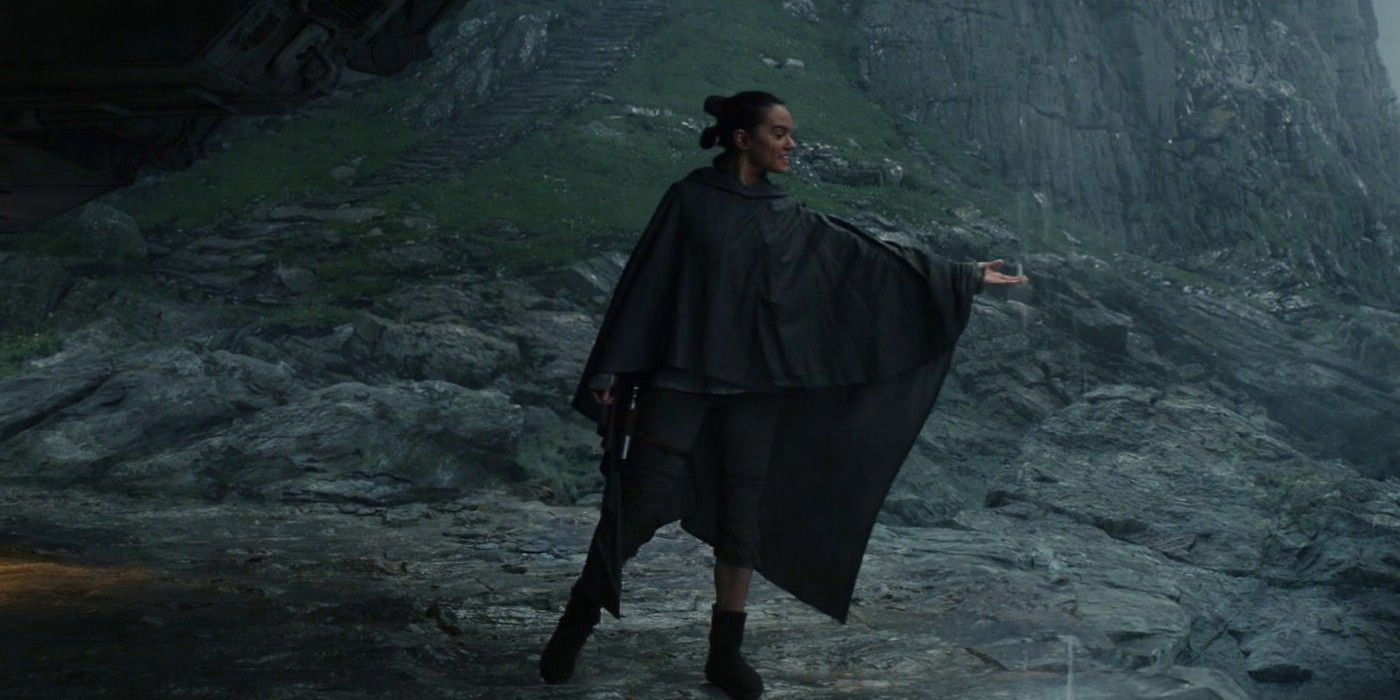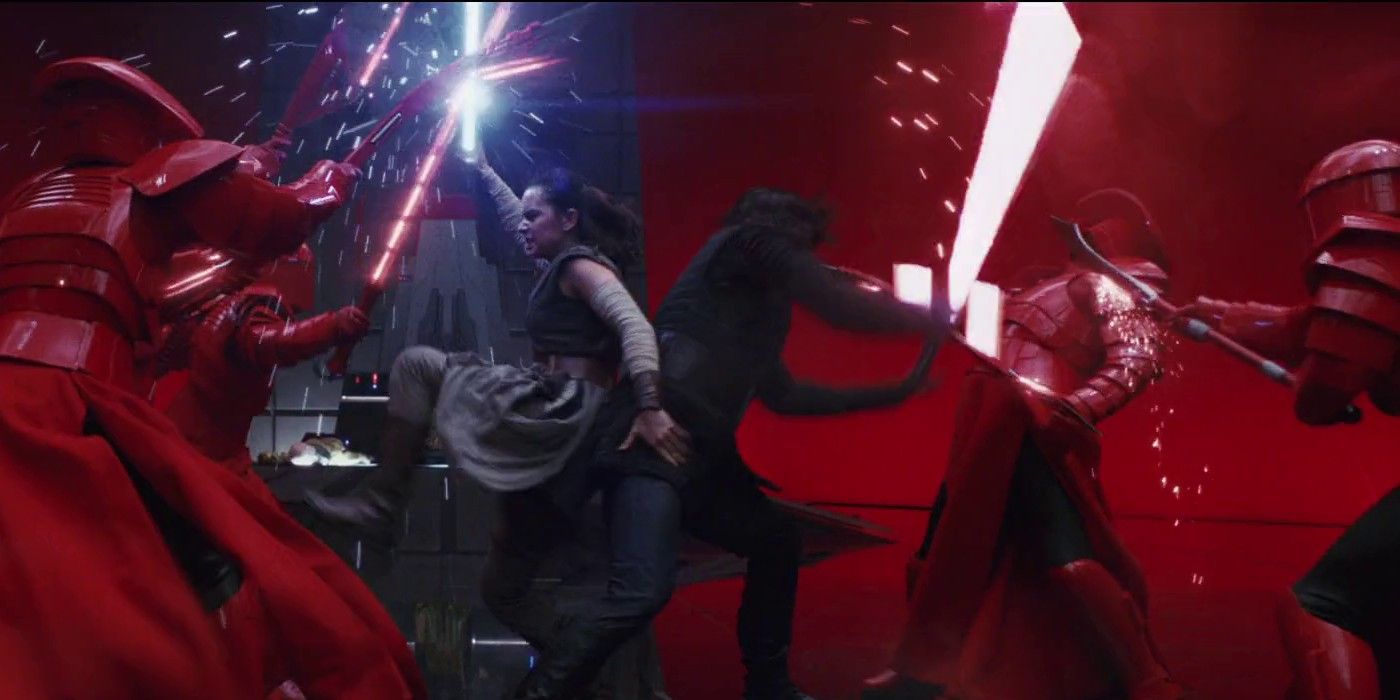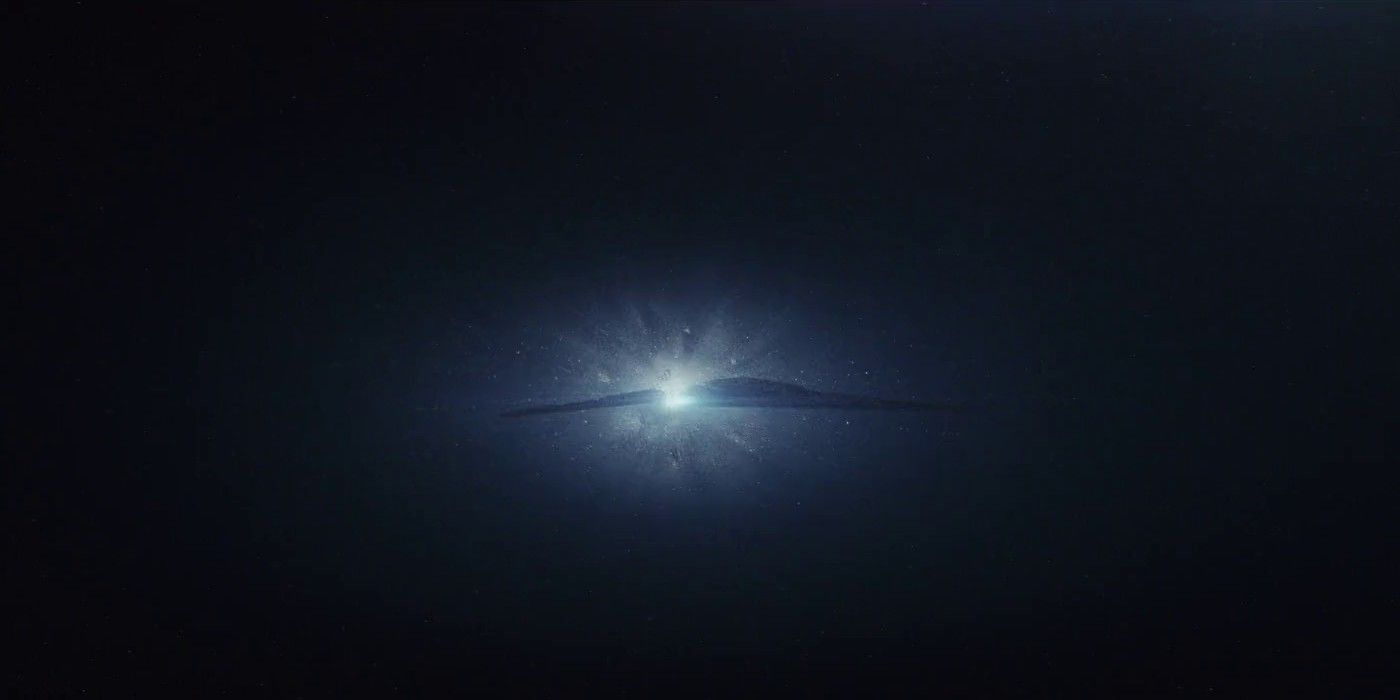When it comes to Star Wars, fans aren't exactly stuck for visual grandeur. The series is littered with memorable moments, from lightsaber duels and spaceship dogfights, to surfing down sand dunes beside a derelict Star Destroyer. However, Rian Johnson's The Last Jedi set a new standard for the series to aspire to.
Though the sequel trilogy could have learned from some aspects of the prequels, it restored a more tactile feeling to the galaxy far far away, after the pristine but vapid visuals of the prequel trilogy. Together with cinematographer Steve Yedlin, Johnson meticulously crafts each shot, not only bringing the audience closer to each character's emotional state, but providing a sense of scale and perspective that only the best Star Wars movies can boast.
With the exception of Ahch-To, Johnson took the opportunity to explore new corners of the galaxy. While these environments are more grounded than the typical Star Wars fare, they are also some of the most visually distinct. Each planet's unique identifiers are cinematically stunning while serving importance to the plot. The casino planet Canto Bight is concerned with artifice and sheen, reflecting the hollow core of its populace, while Ahch-To is home to a more traditional natural beauty. The island world is home to some glorious green, rugged cliff faces and gentle water. This fits with the balanced nature of the force which emanates from the planet, home to the first Jedi temple.
Meanwhile the mineral planet Crait contains a coating of white salt, that obscures a blood red surface. It plays an important practical role in the story, showing that Luke Skywalker is using the force to project his appearance in front of Kylo Ren in order to distract the First Order from the fleeing Resistance members. However, it also plays a symbolic role, a visual motif of the blood on the First Order's hands. When Kylo orders every gun to fire upon Luke, red dust plumes into the surroundings.
Similarly, during their own confrontation, Luke makes no contact with the dusting of white salt while Kylo's movements create deep red incisions. On one level, the contrasting white and red are cinematically striking. On another, it offers the audience a subtle clue into what Luke's doing, but on a symbolic level, it also represents the bloody final blow that Kylo thinks he's struck as he slices through the midsection of Luke's projection - just as he did with Luke's lightsaber to Snoke. This sort of multi-layered visual storytelling is what separates The Last Jedi from the others in the series.
Critically, The Last Jedi's cinematography serves the story to create beautiful character moments. Johnson's attention to detail and character is perhaps best demonstrated by the hidden Han Solo easter egg that the director confirmed earlier this year. Despite the uncertainty facing Rey when she first arrives on Ahch-To, having been rebuffed by a jaded Luke Skywalker, she displays a moment of warmth - in the midst of the pouring rain. Taking cover under the Millennium Falcon, she reaches out with a smile and lets the rain rinse the palm of her hand.
Having been raised on the desert planet Jakku, there's an almost childlike joy in her response to the abundance of water draining from the top of the Falcon. Were her adventures to continue in a Disney Plus series, her reaction to the planet Kamino would be something to behold. Johnson manages to generate empathy through a relatable shot that is as simple as it is pure, he's comfortable illustrating the splendour of both the noisy bombastic space battles and the more personal, reflective moments.
Drenched in red, portraying an openly hostile environment, Snoke's is the most evocative throne room in the series. Filmmakers often use color to set a particular mood and Johnson deliberately dresses the room in blood red to evoke passion, power and rage - typically associated with Sith. This volatility feeds into the uncertainty the audience experiences as Snoke envisages Kylo killing Rey. In turn, it mirrors the turmoil that Kylo confronts as he struggles with the decision to side with his master or Rey. Were the room to be more sterile, the ensuing conflict would lack an extra edge.
Johnson may well have found Snoke 'fundamentally uninteresting', but he still managed to use his death to serve the broader story. It also prompted one of the most visually striking fights in the Star Wars universe so far. For all of Snoke's posturing his grip on his pupil erodes, just as the surrounding environment goes up in flames. After Kylo betrays and kills his master, he and Rey battle with Snoke's praetorian guards as the red drapes burn away. Combined with John Williams' score, the scene is scintillating, and seeing the two of them team up against Snoke's bodyguards helped create a truly unpredictable moment.
In what is undoubtedly the movie's most infamous scene, Admiral Holdo turns her doomed ship in the direction of Snoke's ship and executes what is now known as the 'Holdo maneuver'. Having been set up in Star Wars Rebels, the move produces the most stunning scene in the whole movie, not only for its visual extravagance but for its adherence to the themes the movie has explored. And of course, there was also the subtle foreshadowing of the scene when Leia dissected a holographic version of Snoke's ship as she pulled herself back from the brink in outer space.
At its most basic, the image of the Resistance flagship breaching Snoke's Supremacy is a jaw-dropping moment. Yet, simultaneously on board the ship, Kylo Ren and Rey wrestle over Luke's lightsaber, both of them divided by their causes and their own internal struggle. The Supremacy is portrayed as an oppressive behemoth throughout the movie, a symbol of the First Order's dominance looming over the dwindling Resistance fleet. However, as Holdo turns the tables on the First Order, the camera cuts to a much deeper point in space. Suddenly, in the vast expanse of space and during an extended period of silence, the ship is stripped of its presence - a fleeting façade in First Order's fleet.
Ultimately, Star Wars is space opera and while space dogfights and lightsaber duels are synonymous with the franchise, the characters are at its heart. Johnson and Yedlin's unmatched attention to detail elevates The Last Jedi over its competitors, making it the most visually compelling Star Wars film. While the others may have depth beyond their immediate beauty, The Last Jedi rarely wastes a shot as it frequently merges visual splendor with intimate character moments.

